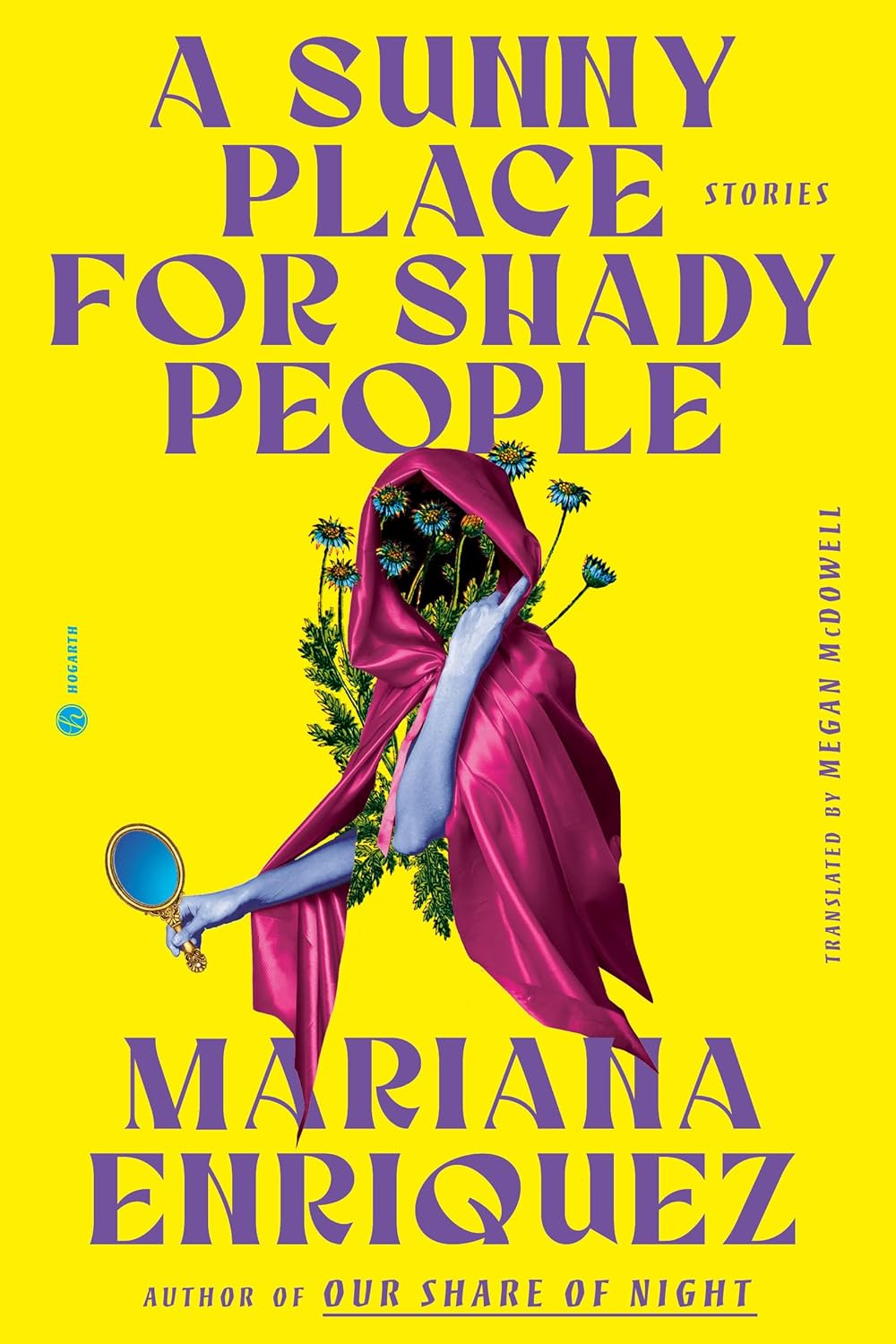Review of A Sunny Place for Shady People: Stories by Mariana Enríquez, translated by Megan McDowell

A Sunny Place for Shady People: Stories
Mariana Enríquez, translated by Megan McDowell
Hogarth, 2024, 272 pages
$28.00
Reviewed by Ruby Stefanucci
Mariana Enríquez, renowned for her 2021 International Booker Prize shortlisted work The Dangers of Smoking in Bed, haunts readers once more in her collection A Sunny Place for Shady People: Stories. The twelve short stories, primarily set in Argentina, follow the horrors and lives of predominantly women narrators. Echoing themes of her previous work, Enríquez revisits sexism, illness, class inequality, gentrification, and mental and physical ruin throughout the text in a post-pandemic setting. A Sunny Place for Shady People is built on the language of mythology, as myth is explained and entangled in her stories.
In the collection, Enríquez tears womanhood apart; she inspects the ugly insides and confronts us with the pieces of what’s left. Her elements of horror are drawn from the dark and undesirable intricacies of humanity and femininity—the parts of ourselves we hide and shy away from. Her depictions of abandonment, absence, and women in isolation swiftly manifest into horror. She portrays scenes of disbelief, in which a woman’s intuition is diminished, and scenes of transformation, as when women are metamorphosed against their will in “Night Birds” or mutilate themselves for freedom in “Metamorphosis.” Enríquez explores women’s consciousness and experiences, as we witness them grapple with understanding themselves and the horrors to which they succumb.
Enríquez’s narrators are not perfect victims nor martyrs. Her characters live in worlds on the brink of collapse, built on colonialism, sexism, and paranoia. The beauty of Enríquez’s text lies in the unravelling of these forces and the authentic imperfections of her characters.
A Sunny Place for Shady People provokes visceral reactions through the stories’ building tension and direct, striking imagery. Her story “Refrigerator Cemetery” (one of her less grotesque works) exhibits horror in the images of countless abandoned refrigerators and naïve protagonists.
Enríquez’s final, most insidious story closes the collection cyclically, as “Black Eyes” showcases a rejection of the supernatural, as opposed to its invitation in the first story, “My Sad Dead.” Enríquez prompts readers to question how horror might dominate our lives if we let it in.
Ruby Stefanucci (she/her) is currently based in Tarntanya/Adelaide, Australia. She recently completed her undergraduate study double majoring in English and Classics, and was a fall 2024 intern with Sinister Wisdom. Ruby is a lover, writer, artist, and poet, but mainly just a girl in the world.
"Empowerment comes from ideas."
― Charlene Carruthers
"Your silence will not protect you."
— Tourmaline
"Gender is the poetry each of us makes out of the language we are taught."
— Leila Raven


